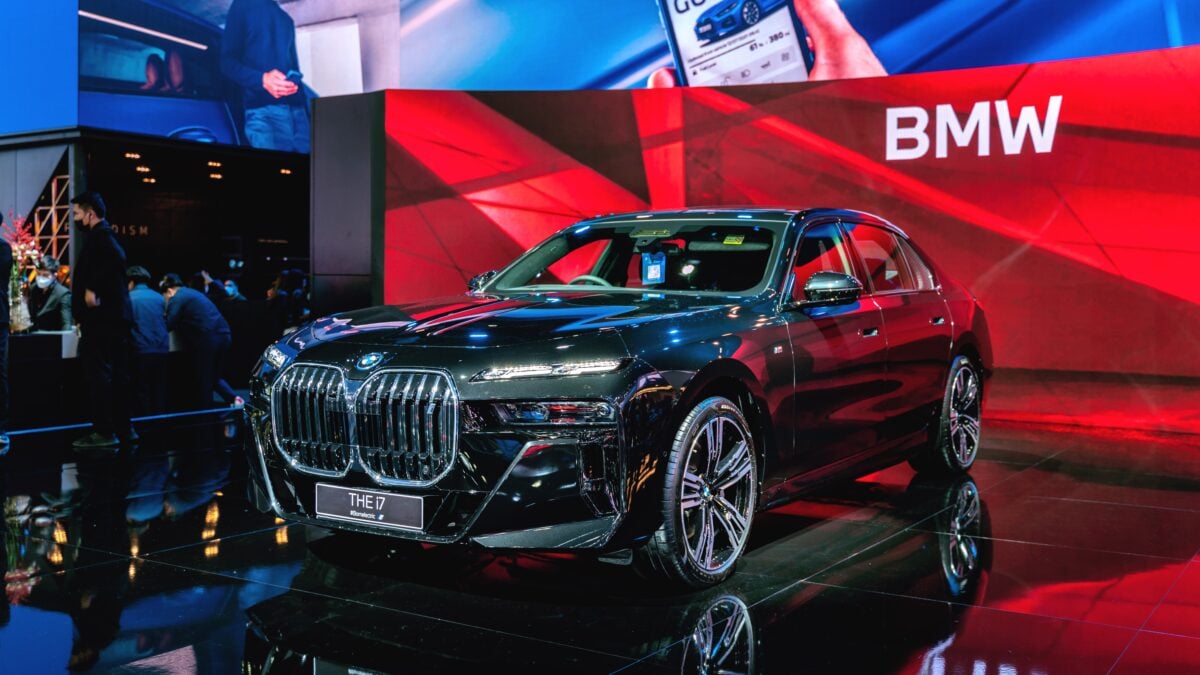TLDRs:
- Qualcomm and BMW introduce Snapdragon Ride Pilot, enabling hands-free highway driving in the BMW iX3.
- The system is validated in 60 countries, with plans to expand coverage to over 100 by 2026.
- Snapdragon Ride Pilot competes with Tesla and BYD in the growing automated driving market.
- Qualcomm aims for $8B in automotive chip revenue by 2029 through advanced driver-assistance systems.
Qualcomm and BMW have jointly launched an advanced automated driving system called Snapdragon Ride Pilot. The system, which will debut in BMW’s all-new electric iX3, offers hands-free highway driving, automatic lane changes, and parking assistance.
Over 1,400 engineers from locations including the U.S., Germany, Sweden, Romania, and the BMW AD Test Center in the Czech Republic collaborated for three years to develop the system.
“Our collaboration with BMW’s world-class team has enabled us to deliver a revolutionary driver-assistance system that prioritizes safety,” Nakul Duggal, Group General Manager at Qualcomm said in a Friday press release. “Snapdragon Ride Pilot sets a new benchmark for automated driving technology worldwide.”
Global Rollout Targets Over 100 Countries
Qualcomm confirmed that the system is currently validated for use in more than 60 countries and is slated to expand to over 100 countries by 2026.
The scalable platform can be adapted for single-camera active safety systems or more complex multi-camera, multi-radar setups suitable for both highway and urban environments.
By offering the system to global automakers and Tier-1 suppliers, Qualcomm aims to broaden adoption beyond BMW, allowing other manufacturers to integrate advanced driver-assistance features quickly and cost-effectively.
We’ve joined forces with @BMWGroup to develop @Snapdragon Ride Pilot. This groundbreaking #AI-enabled driver assistance system makes its global debut in the all-new @BMW iX3. With this system, the car prioritizes safety and sets a new industry standard. #IAAMobility2025… pic.twitter.com/9HVTfzJezH
— Qualcomm (@Qualcomm) September 5, 2025
Competing With Tesla and BYD
The launch of Snapdragon Ride Pilot places BMW and Qualcomm directly in competition with Tesla, which has pioneered semi-autonomous driving through its Autopilot and Full Self-Driving features.
Similarly, China’s BYD has rapidly advanced its electric vehicle offerings with integrated driver-assistance technologies, raising the stakes in global markets.
Industry analysts note that automated driving systems are becoming a key differentiator in the EV market, as consumers increasingly expect safety and convenience features. By positioning the iX3 with hands-free highway capabilities, BMW hopes to attract tech-savvy drivers seeking advanced features without fully autonomous “Level 5” systems.
Advanced Technology Stack and Safety Focus
Snapdragon Ride Pilot is built on Qualcomm’s Snapdragon Ride system-on-chips and a co-developed software stack with BMW.
The system integrates a 360-degree perception layer, a safety-first approach meeting Automotive Safety Integrity Levels (ASIL) and Functional Safety (FuSa) standards, and context-aware AI-based behavior prediction.
The platform is continuously updated using a cloud-based data flywheel, integrating real-world and simulated driving data. This approach allows the system to handle complex traffic scenarios while maintaining high safety standards.
Qualcomm’s Automotive Ambitions
Qualcomm’s automotive revenue rose roughly 21% to $984 million in the third quarter, and the company projects $8 billion in annual automotive chip revenue by fiscal 2029.
The company is increasingly focused on competing with Nvidia, Mobileye, and other providers in the rapidly expanding market for automated driving and EV electronics.
With Snapdragon Ride Pilot, Qualcomm and BMW are signaling a new era in hands-free driving, combining cutting-edge technology with global reach to challenge established competitors like Tesla and BYD.





